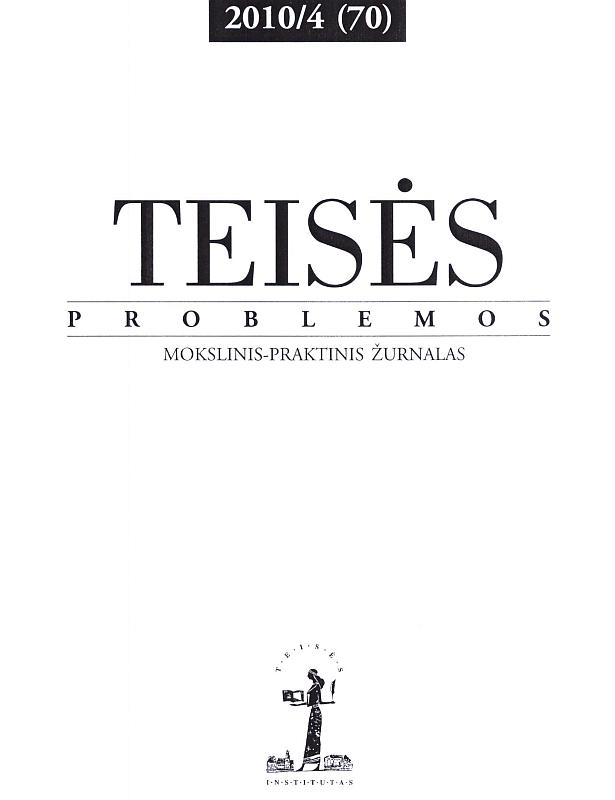Žmogaus teisių ir kitų konstitucinių vertybių darninimo ir „pirmenybinių laisvių“ konstitucinių doktrinų santykis
The Relationship Between Balancing of Human Rights and Other Constitutional Values and "Preffered Freedoms" Doctrine
Author(s): Lina BeliūnienėSubject(s): Law, Constitution, Jurisprudence, Constitutional Law, Human Rights and Humanitarian Law
Published by: Lietuvos teisės institutas
Summary/Abstract: This article analyses the results of applying the two doctrines interpreting constitutional provisions, i. e. balancing of constitutional values in the Republic of Lithuania and preferred freedoms doctrine which was applied by the US Supreme Court during 1940–1950. In quest of similarities between these doctrines the context of interpreting cases relating to freedom of information/ speech freedom it is analysed. The doctrine of US Supreme Court is analysed in order to perceive it, which is recognized as more favourable protecting human rights and taking into consideration a circumstance that importance of this doctrine is asserted by the use of categorization as a way of interpreting the constitutional provisions which is reviving in the constitutional jurisprudence of US. Comparing these doctrines leads to the conclusion that these doctrines are similar in a few features. In the jurisprudence of the Constitutional Court of the Republic of Lithuania it is used the methodology of categorization recognising the fact of identification of interests and recognition of conflicts between them; the fact, that the foundations of restriction of human rights are exceptional. The use of definitional balancing in the Lithuanian constitutional doctrine is confirmed by the fact that doctrinal definitions are constructed which determine the things that are in the content of them and the things that don’t fall into the content of the definition. It is recognised, that these two doctrines include the use of least restrictive means test as an element of proportionality between constitutional goods. These similarities between the constitutional doctrines of the Constitutional Court of the Republic of Lithuania and the Supreme Court of US show tendencies towards migration of constitutional ideas between the countries which cherish not the same tradition of law and the tangle of these ideas in the doctrines of the separate courts.
Journal: Teisės problemos
- Issue Year: 2010
- Issue No: 70 (4)
- Page Range: 5-56
- Page Count: 52
- Language: Lithuanian

